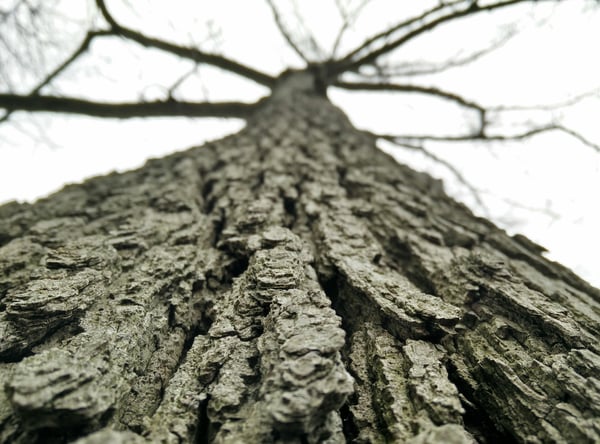I was talking with some of my fellow bloggers the other day, and I said something very stupid. We were discussing our May blogs and I said, “I think I'll do a blog about oak,” as though that were a simple topic that I knew something about. Let's be clear, the only thing I knew about oak before I started my research was I like the way it makes my wine taste sometimes. That's it. There's a lot to unpack here, so, let's just jump right in.
Our earliest reference to wood being used for the storage and transportation of wine comes from Herodotus, writing about Armenian wine makers having palm-wood casks of wine sent down the Tigris river to Babylon in the 7th century BCE. While several different types of wood have been used over the centuries, oak emerged as the most popular. Wooden barrels wouldn't successfully replace clay amphora as the preferred method of storage until around the 3rd century CE, in the middle of the 20th century the introduction of steel tanks ended the reign of wooden barrels. However, oak is still commonly used for clarifying, as well as adding tannin and flavor.
For the longest time, I've been under the impression there are two types of oak, French and American. Like everything else in wine, the truth is a little more complicated. Oak can be broadly divided into two categories: white and red. Red oak is too porous and, therefore, unreliable for making a watertight barrel. Out of all the species of white oak, only three are generally used for winemaking:
- Quercus alba, which is one of several species commonly referred to as American white oak.
- Quercus petraea, also known as sessile oak, it can be found throughout Europe, extending into Anatolia, and Iran.
- Quercus robur, which can be referred to as English, French, or Russian oak, is found throughout most Europe.

In some European forests, Quercus petraea and Quercus robur are growing side by side, leading to many hybrids between the two species. Regarding cooperage, the species of an oak is a less important factor than grain size and geographical origin, just as some wines are 100% varietal and others are blends so to are oak barrels sometimes made from a single species of European oak or a blending of the two species and their hybrids. The way in which a barrel is made can have as much impact on a wine as the type of oak used or a host of other factors that go into wine making.
Talking about oak in wine generally conjures up images of barrels sitting in cellars, but in truth it isn't always an oak barrel that's adding the oak influence to your wine. Oak barrels, especially new barrels, are expensive and that cost is generally reflected in the price passed on to the consumer. In order to stay competitive some winemakers have found shortcuts to add oak flavor at a reduced cost. In some cases steel tanks are lined with oak inserts to mimic the effect of barrel aging. Other shortcut examples include inner oak staves, oak chips, and “oak essence,” which comes in both liquid and powder form and is often an illegal additive.
The influence of oak can present itself in different ways as you drink a wine. I generally look for notes of vanilla, clove, and even a bit of smokiness. If it's done well, the addition of oak can transform a wine into a smooth, complex, and fascinating experience, but it can also be heavy-handed. The clumsy addition of oak can ruin what would otherwise be a great wine. One of the most controversial examples of this may be the classic “buttery” Chardonnay often associated with California. The buttery character of these wines was the result of oak influence, which at one time was very popular. Like anything else, once buttery Chardonnay was en vogue imitators arose looking for ways to make it faster and cheaper, soon the market was so saturated with buttery wine that consumers wondered why they had ever liked it in the first place. This is why we can't have nice things.
If you'd like to try some nice oaked wines before the hucksters and snake oil salesman come and ruin everything, we have a nice selection at The Chopping Block. Obalo Rioja crianza is aged for six months in oak and demonstrates that lovely clove flavor I mentioned very well.
We also have a wonderful oaked Chardonnay, L'Oliveto, which sees a little oak during fermentation, providing a wonderful balance between the fruit and buttery components without being too heavy-handed.
If you're interested in learning more about wine, be sure to check our calendar for upcoming wine classes.
